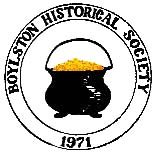Christmas Greetings
Christmas Greetings
By Carrie Crane
While greeting cards date back to the ancient Chinese and early Egyptian cultures, they did not become popular in Europe until the mid-nineteenth century. At that time a set of factors, greater literacy among the population; mass printing availability due to the invention of the Guttenberg press along with mechanical lithography for color reproduction; and the introduction of the penny stamp for affordable and convenient postage, all coalesced to spur on the greeting card industry.
The first holiday themed greeting card is traced back to 1843. That year, Henry Cole, who was popular among the social elite of Victorian England, began receiving countless traditional holiday letters from his many acquaintances. Being a busy man, he devised a plan to make his return correspondence less burdensome. He presented his idea for a card design to his friend and artist, J.C. Horsley who then illustrated what is now believed to be the first Christmas card. The illustration was brought to a London printer who using lithography, produced a thousand copies on cardboard, to create a postcard. Cole’s card consisted of an image of holiday merriment and the greeting “Merry Christmas and A Happy New Year to You”. Included on the card were to: and from: blanks where Cole could quickly personalize it. The idea readily spread though his social group, but it took several decades for the idea to truly become popular in England and the United States.
In Boston in 1875, Louis Prang, the owner of a print shop, produced what is thought to be the first US Christmas cards which displayed a tasteful and artistic image of a lovely flower and the words Merry Christmas. This type of design remained the trend until 1915. The modern Christmas card with images of wreaths, angels, Santa and sleighs etc. emerged at that time, mostly printed by an upstart company in Kansas City, run by Joyce, Rollie, and William Hall. This company, which a decade later would become Hallmark, moved away from the postcard and established the new industry standard of the 4”x 6” folded card with envelope.
The card you see here is part of the collection of the Boylston Historical Society and Museum. It is a beautifully illustrated, dye cut, lithograph print Christmas card. At 5 7/8th wide by 4 ½ inches tall by 1” deep, it is a 3-dimensional depiction of the nativity scene. One wise man, the shepherd boy and his sheep are in the foreground, while Joseph, Mary and baby Jesus are protected within the manger. On the back panel, two cows peer in from the back window with a look of curiosity. On a banner running across the thatched roof of the manger are the Latin words “Gloria, In Excelsis Deo!”. A later 1987 version of this card replaced the Latin with the English, “Glory to God, In the Highest!”
The card has a copyright of 1940 Reproducta, Inc. 0112, which can be seen on the bottom left and Litho in U.S.A. on bottom right. The Reproducta Company, Inc was founded in Germany in the early 1920s by the family of Rudolph Schulhof. After fleeing Europe for safety in the United States, he re-established the company in New York City in 1939. The company’s specialty was the production of religious products like this holy card often sold through church catalogues. The Reproducta Company, renamed Quadriga Art, remained in operation under the Schulhof family leadership for 75 years.
The nativity scene, like the one depicted on this card has become a popular Christmas theme around the Christian world and has an impressively long history. In 1223, St. Francis of Assisi driven by great devotion, recreated the setting of the birth of Jesus in a cave in the Italian village of Grecio. The scene was made complete with hay, live animals and a living baby. Over the next few centuries, the tradition of the nativity spread throughout Europe with displays constructed outside churches and in village centers, often including live actors. Later artisans created miniaturized nativity sets that could be displayed in the home. This card carried that heartwarming tradition along in a form that was beautiful and easy to share.
Season’s Greetings!
________________
Acknowledgements
Editor, Nancy O'Loughlin Filgate, Director and Curator, Boylston Historical Society & Musuem, Inc., Boylston, Massachusetts
https://www.smithsonianmag.com/history/history-christmas-card-180957487/
https://slate.com/human-interest/2013/12/history-of-the-christmas-creche-st-francis-invented-the-nativity-scene.html
http://www.ibiblio.org/archives-archivists/msg00479.html; https://www.cnn.com/2014/06/30/us/new-york-fundraiser-settlement/index.html
Nancy Filgate, photography
Nativity Card, Reproducts, Inc. 0112, Lito, U.S.A., Boylston Historical Society & Museum Collection, Boylston, Massachusetts
